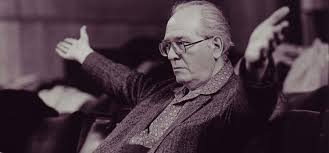Jean Barraqué (1928-1973) is one of France’s most neglected composers, partly due to the limited number of works he left behind. After studying with Messiaen and Langlais, he created a seething romantic Piano Sonata in 1952, using his own brand of “serial” technique. He then destroyed probably about 30 previously completed compositions because they no longer represented his “new” understanding of how to compose.
Now, I am not a rubber-stamp fan of Serialism, which involves the systematic alteration of every “level” in the music, not only notes and motives (Beethoven and many others did that), but also dynamics, rhythms, touches, tempi. In fact, some of the hardest-core Serialists would tell you that they were just exploiting what had been latent all along in the transformation of musical material. They were “merely” extending it to these other domains.
Unfortunately for audiences, the complexity of these maneuvers seemed appreciable only if you were a member of the “in” circle of professionals. Barraqué managed to overcome this alienation through the intensity of his emotion, which he channeled into the technique. Instead of using just one tone row, he invented a concept called the “developing series” in which the row would morph slightly and become a new row, then perhaps again, during a composition, like genetic mutation.
He has very few works available for listening, some vocal chamber music, a concerto for vibraphone and clarinet, one electronic work, and an epic cycle called “La Mort de Virgile,” most of which was never realized.
He was in a car crash in 1964, and his apartment burned to the ground, along with many compositions, in 1968. Then he died at the too-young age of 45 in 1973. British music critic Paul Griffiths wrote a great biography of him entitled “The Sea on Fire” (2003).
© 2014 by Frank Daykin, for Innovative Music Programs


Leave a Reply